The 4th
LaureatePainting
Pierre Soulages
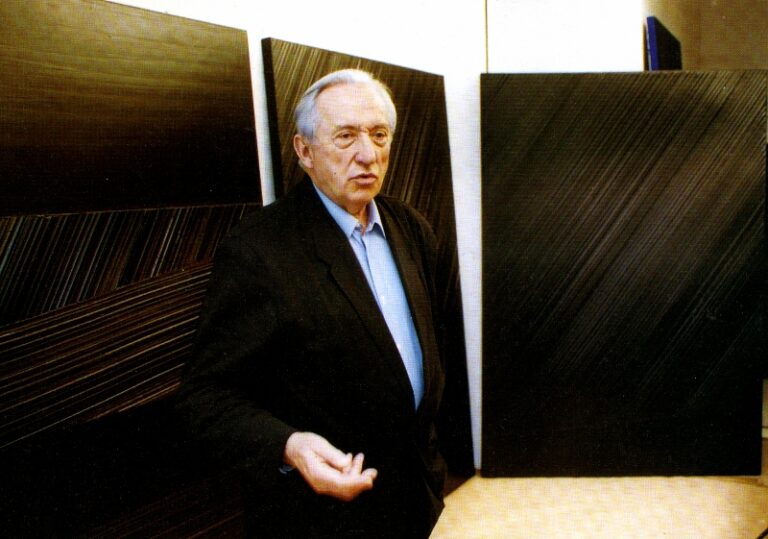
Pierre Soulages was one of the leaders of the new wave of French abstract painters that emerged in Paris after the Second World War. Working with broad,powerful brushstrokes on large canvases,and with a limited palette of black and brown,his work manipulated light and darkness in a way that was both suggestive and profoundly expressive. From the mid-1950s on,his work was seen more in New York than in Paris; in both cities it was influential. Later he painted with brooms and squeegees as well as brushes,introducing texture and surface into the pictorial narrative and reminding the viewer how close painting can be to architecture and music.
Biography
With the end of the Second World War and the start of the Cold War’s threat of total annihilation,Europe hoped both for a renewed confirmation of trusted cultural traditions and also for a cultural spring. In France the key masters of modernism were still active and could perhaps have served as a springboard giving impetus and direction to a new generation. But those great names – Matisse,Picasso,Braque and Bonnard – felt like a barrier. If they could not be ignored,they could at least be circumnavigated by artists needing to work a new vein that might reflect new postwar philosophies. The result was a great wave of abstract painting,stimulated by pre-war ventures associated with artists such as Kandinsky,Klee and Mondrian and by the wartime work of Fautrier,Hartung and Wols. It benefited from the emergence of American abstract expressionism,but France was its European centre and among the chief and most persuasive initiators of the new French painting was Pierre Soulages.
The son of a carriage-builder,Soulages came to painting late,studied art only briefly in Montpellier after military service and then gave his days to labouring in vineyards. Only in 1943 could he give priority to painting and even then progress was slow. In 1946 he moved close to Paris. In 1947 he made his last move,to Paris itself,and found a permanent friend in Hans Hartung,his senior by 15 years. Hartung had escaped from Germany before the war,and Soulages found that his circle of painter friends tended to be immigrants: he himself had made what he called an ‘internal emigration’ in coming north to Paris from his home in the ancient hilltop city of Rodez amid the mountains and stony plateaus,as well as the ancient Celtic megaliths and Romanesque cathedrals of France’s Massif Central.
For lack of funds he was restricted to working on paper and in a small room. In 1949,for his first show,he painted some canvases too. These already included the strong,almost architectural brush strokes and the drama of dark against light that was to become his hallmark and form the basis of his subsequent research. The relationships were uncertain as yet; he worked more firmly on paper,using charcoal and at times walnut stain. Soon,in a larger studio,he developed his mature image and built his reputation. Working with a broad brush over a light ground he constructed clusters of mostly vertical and horizontal bands that were dark – black or brown – and resemble massive scaffolding. It is his manipulation of light and darkness in these paintings that strikes one first; the light a pre-existing situation,the dark elements the result of man’s action (and here,of painting). Light emanates from the surfaces of his paintings while also being held captive within the dark and sombre colours he most often uses. The positive character of his paintings,speaking of strength rather than violence,made him stand out amid the generally more distressed art of Europe.
It is striking that Soulages’ next exhibitions were abroad,in Copenhagen,Munich,New York,Chicago and London,before a Paris dealer started to show his work from 1956. In 1955 a New York dealer had enrolled and exhibited him,and for the next ten years his work was to be seen more often in New York than in France,while other major centres,in Germany as well as the USA took their lead from New York. 1960–66 saw Soulages retrospectives touring the Continent and North America; only in 1967 did Paris present one,at the Musée d’Art Moderne. Soulages’ subtle but confident variations on his basic theme,sometimes bejewelled with colour but normally relying on tonal contrast,fitted the American taste for what was then called action painting,and still invites comparison with Franz Kline’s work after 1950. Like a Romantic painter of around 1800,though with entirely modern means,Soulages sought and attained sublimity.
In short,the fifties brought recognition,and the sixties saw Soulages extending and re-inventing his art in a strikingly international,rather than French or even European spirit. At times he built up his dark structures using broader brushes and then also brooms and broad squeegees,leaving only small interstices for light to strike through. Blacks could become dark blues; paint could be made translucent. Paint could also,in the seventies,become glossy and striated,reflecting light instead of obstructing it,in ways that made his successive brush strokes into a pictorial narrative. More recently flat,matt areas of canvas have often been set against areas of glossy texture in such a way as to re-emphasise the consistently architectural character of his compositions,as well as the tactile and immediate qualities of his painting.
Norbert Lynton
Chronology
-
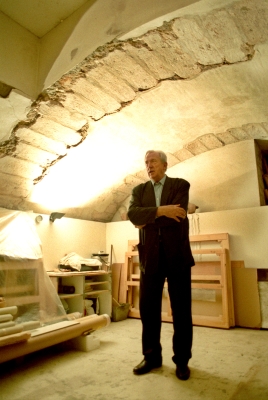
©The Sankei Shimbun
-
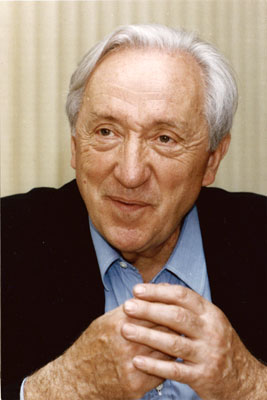
©The Sankei Shimbun
-
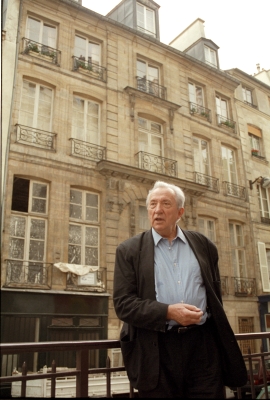
Quartier latin, Paris
-
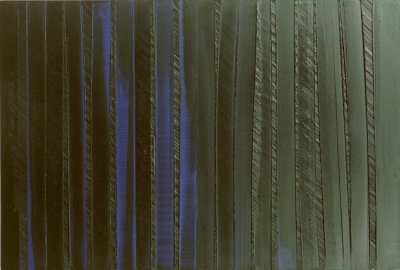
Peinture

